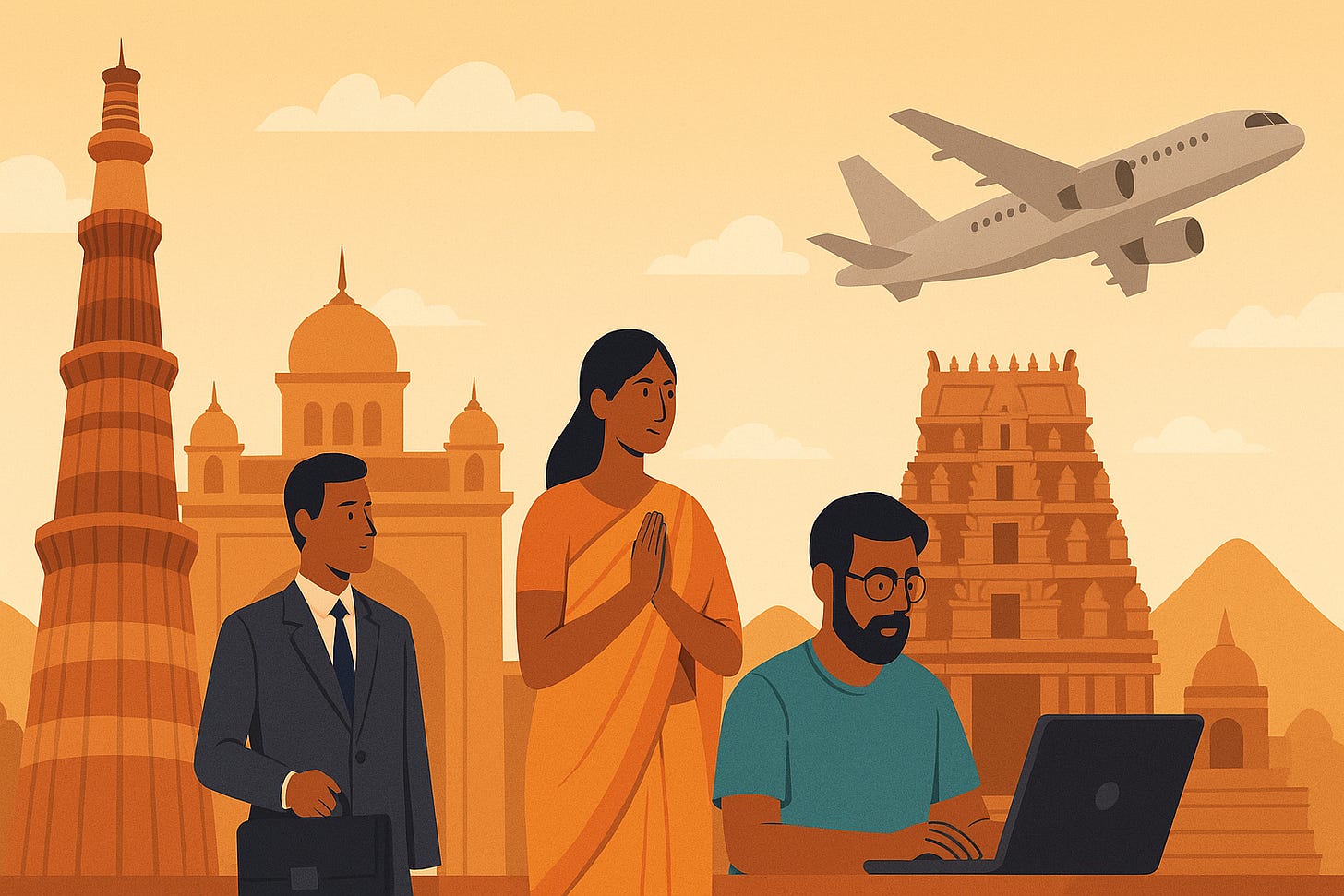When the U.S. government announced a $100,000 fee on new H-1B visas, headlines focused on economics: startups, jobs, IT exports, and stock markets. But beyond the numbers lies a quieter, subtler story - one that touches India’s spiritual life, temple towns, pilgrimages, and the energy of our diaspora.
This is not just a visa policy. It is also a shift in how and where Indian souls live, earn, travel, and give back.
Less Outward Migration, More Inward Roots
For decades, the H-1B was the modern yatra - a journey to Silicon Valley instead of Kashi. Young engineers left their hometowns, settled in the U.S., and sent money back. Now, with $100,000 blocking that path, more Indians may stay home or return sooner.
More rootedness: Families that might have scattered across continents may remain in Bengaluru, Hyderabad, or Pune, strengthening local communities.
Spiritual consequence: People will have more presence in Indian temple life, festivals, and rituals instead of watching them on YouTube from afar.
Diaspora Giving and Temple Economies
NRIs are among the most generous patrons of Indian temples. Tirupati, Shirdi, and Somnath have all seen crores in donations from abroad.
With fewer new migrants to the U.S., the flow of dollars to temples may shift but not stop. Gulf, UK, and Canada NRIs will continue giving.
But the balance may tilt back toward in-person offerings, as professionals in India redirect wealth into local temples, charities, and spiritual trusts instead of wiring donations from abroad.
This could re-energize smaller temple towns, whose economies rely not only on pilgrims but also on diaspora endowments.
Travel and Pilgrimage: NRI Paths May Change
The NRI who once came back to India once a year for Diwali or Kumbh Mela may now be joined by peers who never left.
Domestic pilgrimages: More engineers and professionals will take time to travel within India - Rameswaram, Kedarnath, Puri - instead of saving leave for U.S. immigration paperwork.
Spiritual tourism boom: Temple towns may see new waves of visitors from India’s own rising middle class, as remittances stabilize and incomes grow at home.
A Spiritual Lesson Hidden in Policy
Every disruption carries a teaching. The $100,000 fee is a reminder of impermanence - that no path is guaranteed, not even the once-certain road from an Indian IT campus to a U.S. tech job.
For the individual: This is a call to seek security inward, not outward. If visas close, the mind need not close. Work, worship, and wisdom can still flourish.
For society: India may discover that true wealth is not in how many migrate, but in how many stay and build - spiritually, culturally, and economically.
For temples: The dharmic ecosystem will continue to thrive, but with a stronger India-based anchor. Offerings of time, talent, and devotion may matter as much as remitted dollars.
The Long View
Community cohesion: Temple towns and spiritual hubs may regain vibrancy as fewer young people leave for decades abroad.
Festivals at scale: Ganesh Chaturthi in Pune, Navaratri in Gujarat, and Rath Yatra in Puri may grow even larger as more families celebrate in India itself.
New diaspora hubs: With Canada, UK, and Australia rising, Indian communities will spread into new geographies - carrying yoga, bhajans, and temples wherever they settle.
A Time to Look Within
The H-1B fee hike is a worldly shock, but spiritually, it may be a blessing in disguise. More of India’s sons and daughters will remain close to their roots, their temples, their festivals, and their families.
Instead of chasing visas, perhaps a generation will chase inner visas — access to peace, dharma, and growth.
India’s strength has never been only in exporting talent. It has always been in anchoring the soul. And that, no policy can tax.
✨ Maybe the U.S. closed a door, but India opened a window - a chance to rediscover the value of staying home, of giving back, and of walking the inner path.


